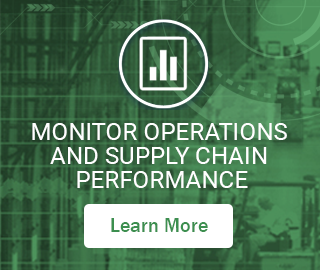A go-to source for info on cutting-edge forecasting research, the International Institute of Forecasters (IIF) publishes journals and hosts conferences that we have relied on for decades. In this introduction, IIF Business Manager Pam Stroud gives an overview of the organization’s offerings. (Smart Software Senior Vice President for Research Tom Willemain serves on the Editorial Board of the IIF’s practitioner-oriented publication, Foresight.)
When founded in 1981, the IIF set as its goal: “Bridge the gap between theory and practice, with practice helping to set the research agenda and research providing useful results”. The IIF keeps its members abreast of the latest trends and research in forecasting through its publications, events and website. Its members are drawn from corporations and institutes of higher learning in more than one hundred countries, and form a vibrant community for networking and professional development.
The IIF’s practitioner journal, Foresight, is dedicated to improving the practice of business forecasting, enhancing the professional development of business forecasters, and bringing forecasting know-how to those entering the profession. Because forecasting knowledge and wisdom are not concentrated in one segment of forecasters, we publish valuable ideas from across the discipline—from forecasting teachers and scholars, forecasting analysts and managers, and forecasting consultants and vendors. And we strive to ensure that these ideas are presented clearly, are supported by evidence and are free of bias.
In addition to our publications, the IIF sponsors an annual conference, the International Symposium on Forecasting (ISF). The ISF is an opportunity for researchers and practitioners to come together to share experiences and cutting edge research, and to network among their peers. The Foresight Practitioner conference extends this opportunity to practitioners, delivering practical professional development for business forecasters.
Another example of ‘bridging the gap,’ between research and practice, is the annual research grant, offered in partnership with SAS, which supports research on how to improve forecasting methods and business forecasting practice.
IIF Membership benefits include:
The International Journal of Forecasting – The IJF is the leading scholarly journal in the field of forecasting. With an outstanding editorial board of 44 internationally known forecasting experts, it is a highly readable, widely used and often-cited research journal.
Foresight: The International Journal of Applied Forecasting – Foresight publishes concise, readable and timely articles on forecasting processes, methods and solutions. It is the essential read for business forecasters and an invaluable aid for forecasting educators and students.
The International Symposium on Forecasting – Members receive discounted registration to the premier international forecasting conference. This annual IIF event attracts the world’s leading researchers, practitioners, and students. Each symposium offers more than 250 research presentations in a setting which emphasizes social interaction, and networking opportunities.
The Foresight Practitioner Conference – Members receive discounted admission to this professional development event for business forecasters, where they learn from practitioners who have earned their expertise in the field at top companies, and from forecasting researchers sharing the business implications of their work.
Recent topics from The International Journal of Forecasting:
• Economic Time Series: Modeling and Seasonality
• On the use of cross-sectional measures of forecast uncertainty
• Measuring forecasting accuracy: The case of judgmental adjustments to SKU-level demand forecasts
Recent topics from Foresight: The International Journal of Applied Forecasting
• How Good Is a “Good” Forecast?: Forecast Errors and Their Avoidability
• Forecast Methods Tutorial: ARIMA: The Models of Box and Jenkins
• Improve Forecasting of Consumer Purchases Using Google Trends
“Since 1981, the IIF has been central to my career. Why? Because it’s a diverse and clever group of people focused on pragmatic, evidence-based research. The annual symposium is a great place to exchange ideas about forecasting.” – J. Scott Armstrong, Professor of Marketing, The Wharton School
Related Posts

Extend Epicor Prophet 21 with Smart IP&O’s Forecasting & Dynamic Reorder Point Planning
Smart Inventory Planning & Optimization (Smart IP&O) can help with inventory ordering functionality in Epicor P21, reduce inventory, minimize stockouts and restore your organization’s trust by providing robust predictive analytics, consensus-based forecasting, and what-if scenario planning.

Smart Software to Present at Community Summit North America
Smart Software’s Channel Sales Director and Enterprise Solution Engineer, to present three sessions at this year’s Microsoft Dynamics Community Summit North America event in Orlando, FL.
.

Smart Software to lead a webinar as part of the WERC Solutions Partner Program
Smart Software, will lead a 30-minute webinar as part of the WERC Solutions Partner Program. The presentation will focus on how a leading Electric Utility implemented Smart Inventory Planning and Optimization (Smart IP&O) as part of the company’s strategic supply chain optimization (SCO) initiative.















